A Balanced Mindset: Emma Nakpairat '24 BLA
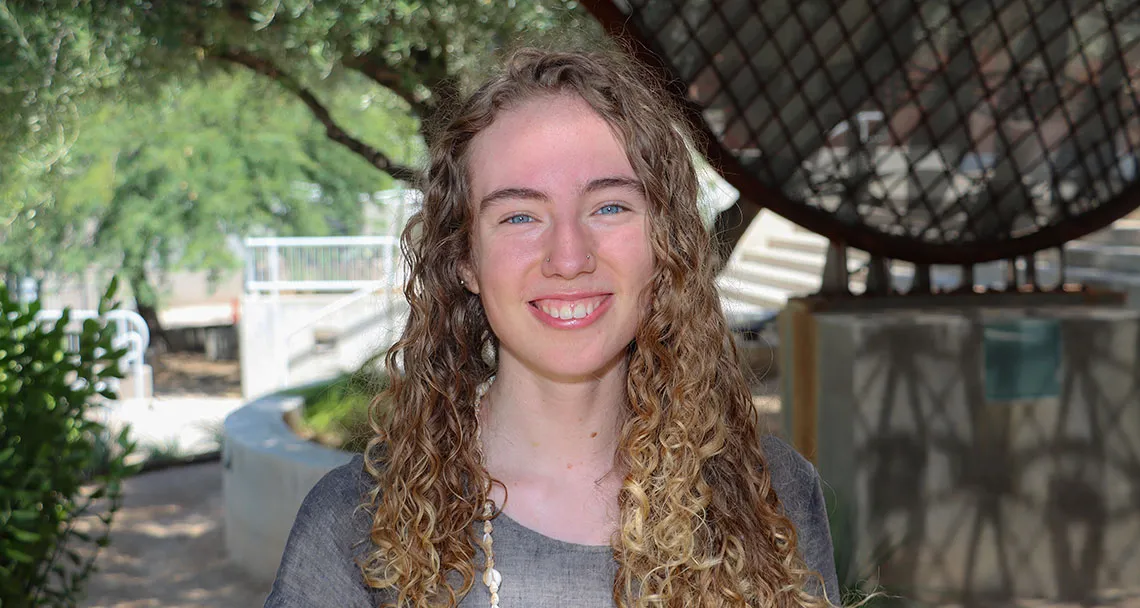
Eight Questions with Bachelor of Landscape Architecture Student Emma Nakpairat
“I recognize that self-praise is just as important as self-critique, and a balanced mindset is essential to become the best version of yourself.”
Originally from Ann Arbor, Michigan, Emma Nakpairat came to CAPLA and the Bachelor of Landscape Architecture program in Tucson to be inspired by the Sonoran Desert—and to combine her love of the outdoors with her thirst to improve the environment in which we live.
What brought you to the University of Arizona to study landscape architecture?
I was originally drawn to the University of Arizona because of its location. The desert has always inspired me, and it is no accident that, out of all the places in the world, I have ended up in Tucson. However, I discovered my interest in landscape architecture completely by accident. I originally planned to study art in college, but when I was booking my tour at the university, I somehow managed to book a tour of the School of Architecture instead of the School of Art. I went on the tour anyway and ended up falling in love with the culture of CAPLA, which led me to start my freshman year as a pre-architecture major. As I learned more about the built environment, I discovered the field of landscape architecture, and became invigorated by the idea of combining my love of the outdoors with my thirst to improve the environment we live in. At the end of my freshman year, CAPLA announced the launch of the BLA program, and I knew that this program was meant for me.
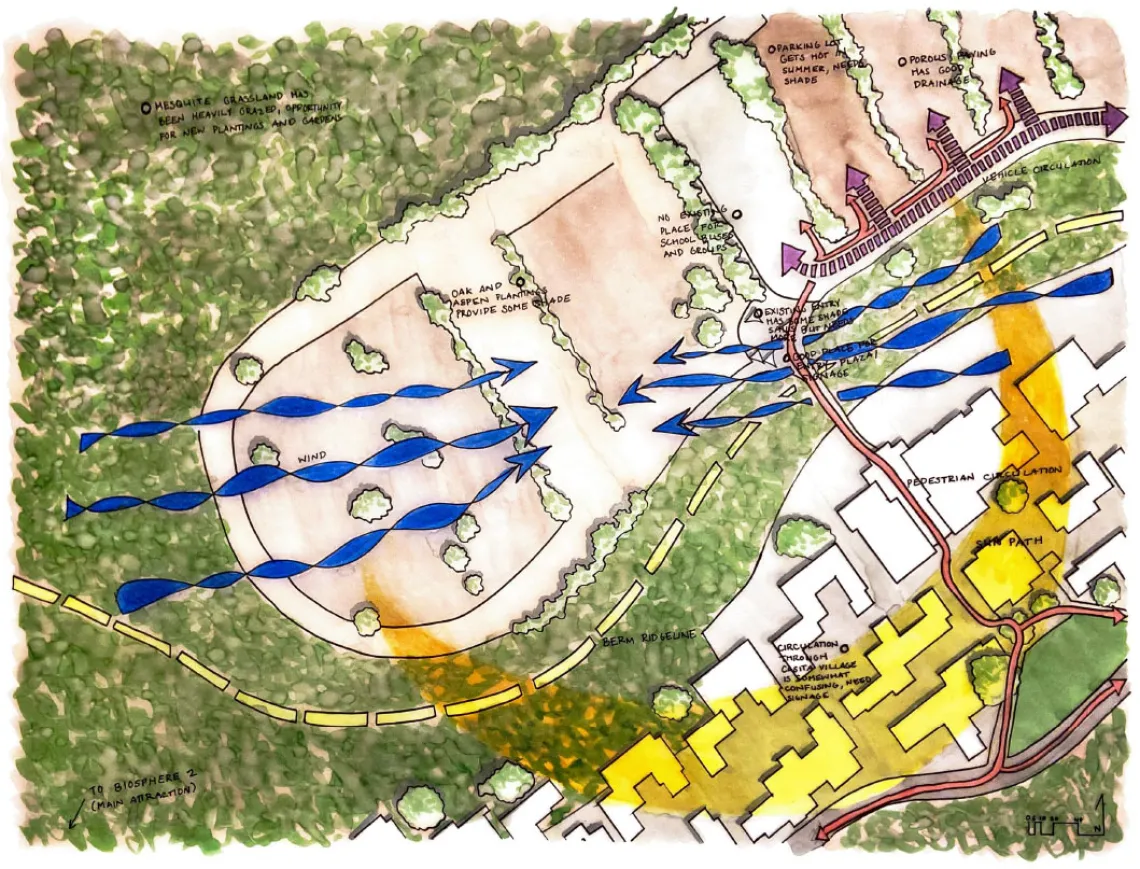
Site analysis by Emma Nakpairat.
What area of landscape architecture most interests you right now?
Currently I am very interested in edible landscapes—that is, landscapes that integrate food production into communities in ecologically sound and culturally sensitive ways. I believe that these types of landscapes can help to address so many pressing issues in our contemporary world, from food insecurity to greenhouse gas emissions. I am a big proponent of community gardens and education about native Sonoran edibles. I hope to one day leverage my landscape architecture education to address issues of inequity by adding more edible plants to the built environment.
What do you like best so far about the BLA program and the College of Architecture, Planning and Landscape Architecture?
My favorite part about the BLA program and CAPLA in general is the people. You meet so many people from so many walks of life here, and it has opened my eyes to many new perspectives and possibilities. I am so blessed to have extremely knowledgeable professors and insightful peers who share their wisdom with me as I navigate my undergraduate years. The individuals of CAPLA are the matrix in which community thrives, and I am grateful for the relationships and knowledge I have gained in this program.
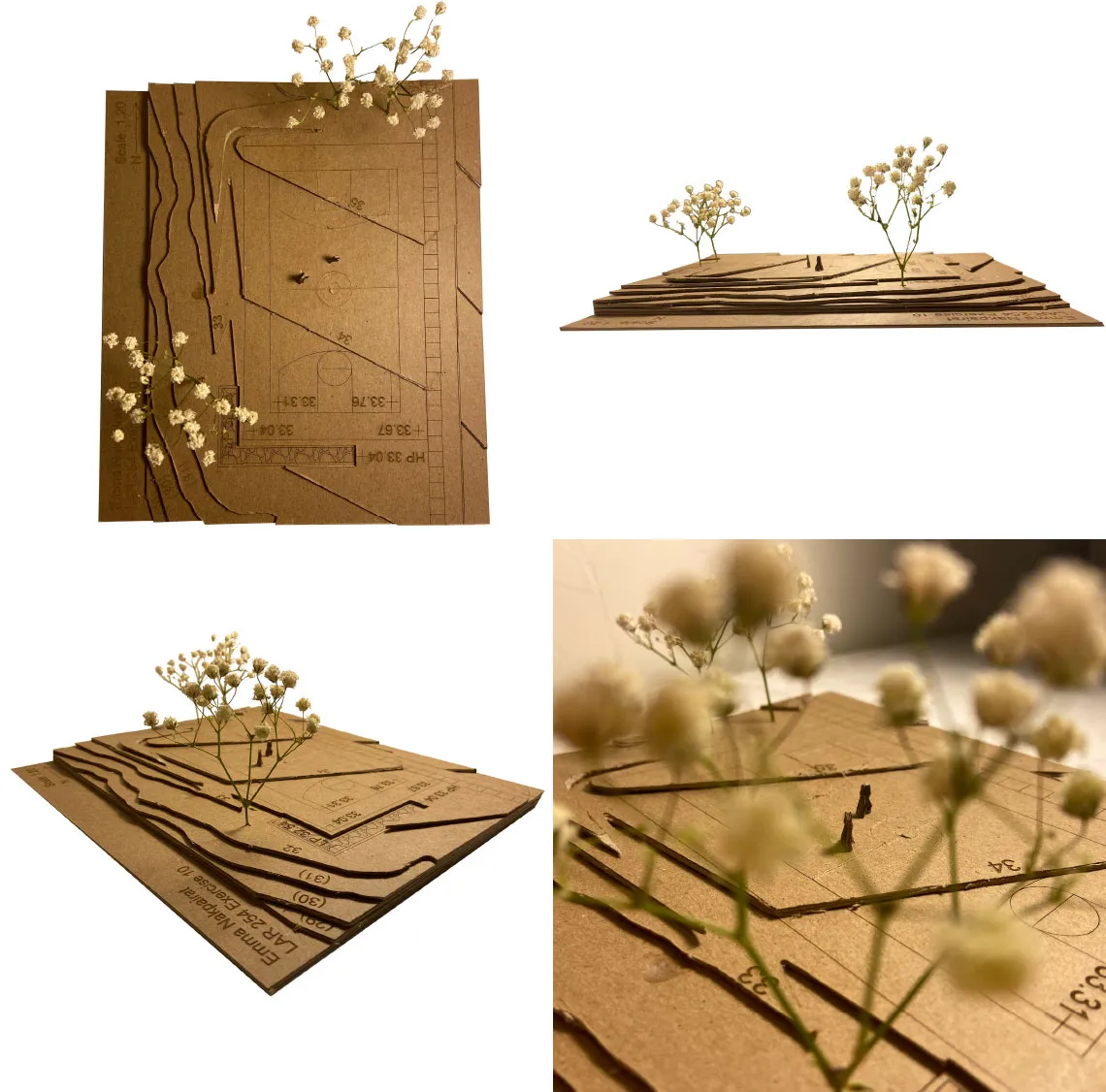
What has been your biggest challenge at CAPLA, and how have you overcome that challenge?
The biggest challenge I have encountered at CAPLA was overcoming toxic perfectionism. When I began my first semester, I found myself surrounded by extremely talented and driven peers, and I sometimes felt as though I was struggling to keep up. I began to scrutinize my work to a level that surpassed self-critique, and created unattainable standards for myself, which caused anxiety when I inevitably fell short. As I dedicated increasingly more time to school, I lost a lot of sleep and sacrificed other hobbies. I reached a point where I realized that my lifestyle was unsustainable, and was no longer helping me to achieve my goals.
After some affirming conversations with my professors and classmates, I realized that it is okay to be imperfect, and my schoolwork is just one part of who I am. I worked to build positivity and self love into my routine, and I am a better designer because of that. I recognize that self-praise is just as important as self-critique, and a balanced mindset is essential to become the best version of yourself.
How have you been challenged by the pandemic?
At the start of the pandemic, I found myself in a new temporary housing situation far away from my hometown and my family. It was difficult to move and adjust in such a short time, all while balancing schoolwork without my usual support system. I was able to find peace by engaging in self-care activities such as sketching, knitting and exercise. I also was very lucky to have housemates I could be open and vulnerable about my feelings with, and they helped to alleviate some of the stress I was experiencing. Even though I felt as though I had the cards stacked against me, I was able to use healthy coping strategies to make the most of the time, and now I even look back on it fondly.
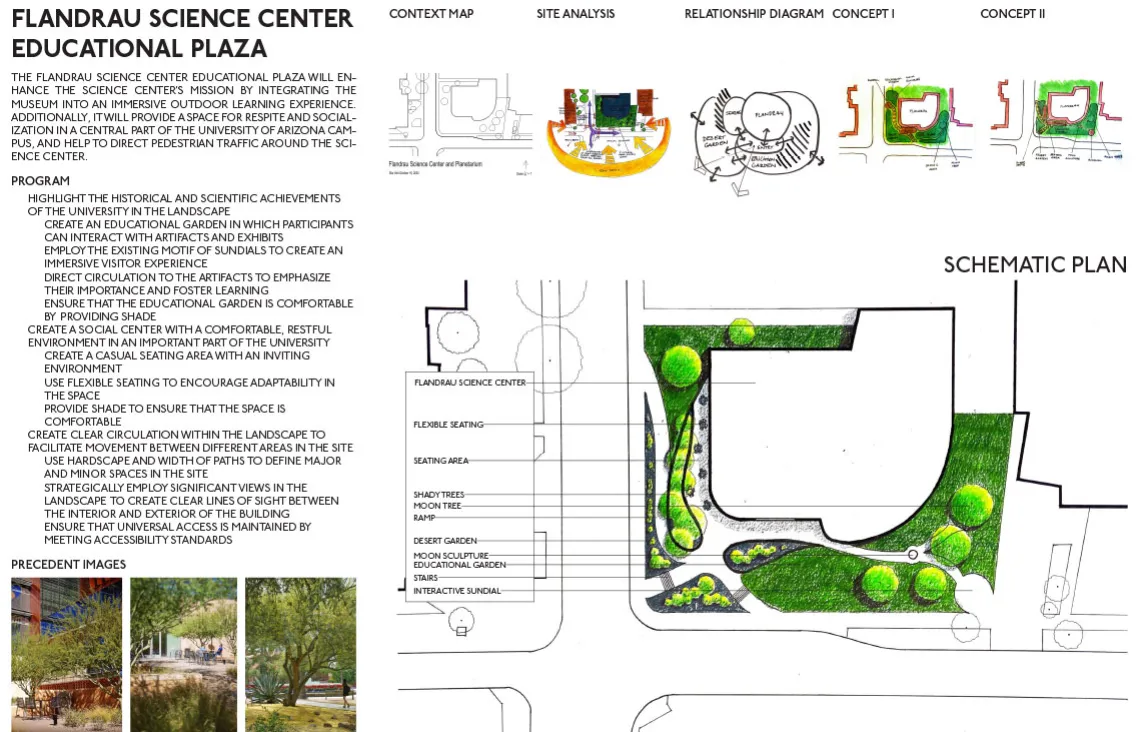
What does the CAPLA experience mean for you?
For me, the CAPLA experience is about learning as a community. Everyone from first years to professors has something to share and something to learn. I am constantly inspired by my peers, and the collaborative work environment encourages me to listen to different perspectives and think in different ways. At CAPLA, you feel like you are part of something bigger than yourself, which encourages you to be the best version of yourself.
Tell us about your job experience and career aspirations.
My work experience thus far has been a hodgepodge of unusual yet rewarding jobs. I have been a rock climbing instructor, a ceramicist and a babysitter, among other things. Currently, I am working as a retail associate at a local plant nursery. In my lifetime, I hope to become a licensed landscape architect, and leverage my CAPLA education to make the built environment more sustainable and equitable. I believe that the built environment has the power to change people’s lives, and I have the power to change the built environment, and I am obligated to use that power to improve the world and the lives of the people living in it.
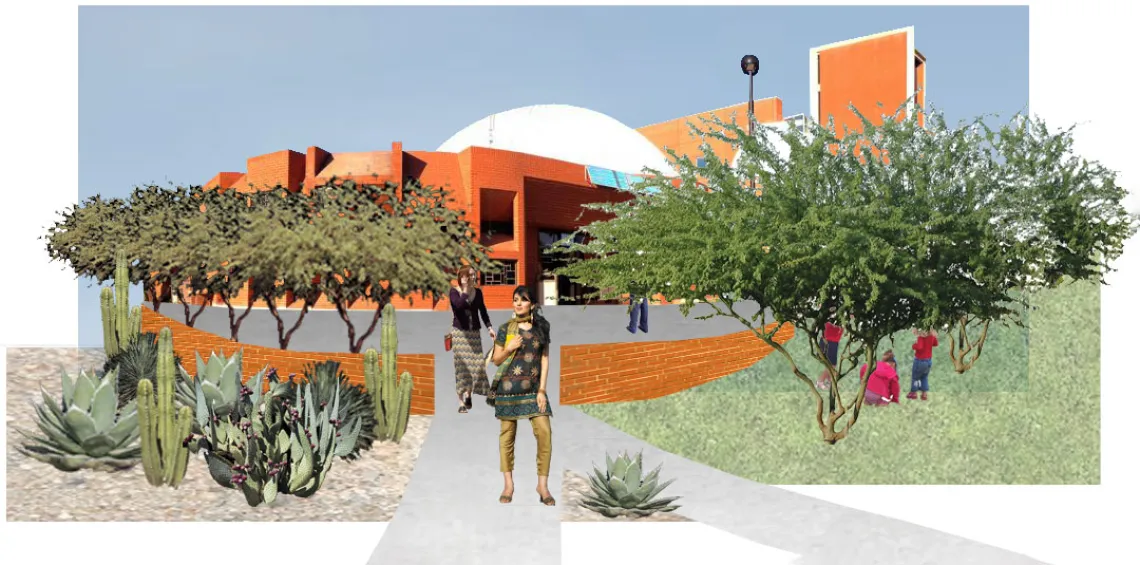
Render by Emma Nakpairat.
What advice do you have for prospective BLA students?
Take every opportunity you can to learn and grow. Talk to your professors. Talk to your peers. Talk to the graduate students and the upper years. Join a few clubs. Attend guest lectures. Read the required readings. Maybe even read the non-required ones as well!
CAPLA presents you with so many unique opportunities for personal and career development, but ultimately you have to be the one to take the initiative. Your undergraduate years are an incomparable experience, and there are so many support systems and resources on campus to help you turn your wildest dreams into reality. Take advantage of every second!



